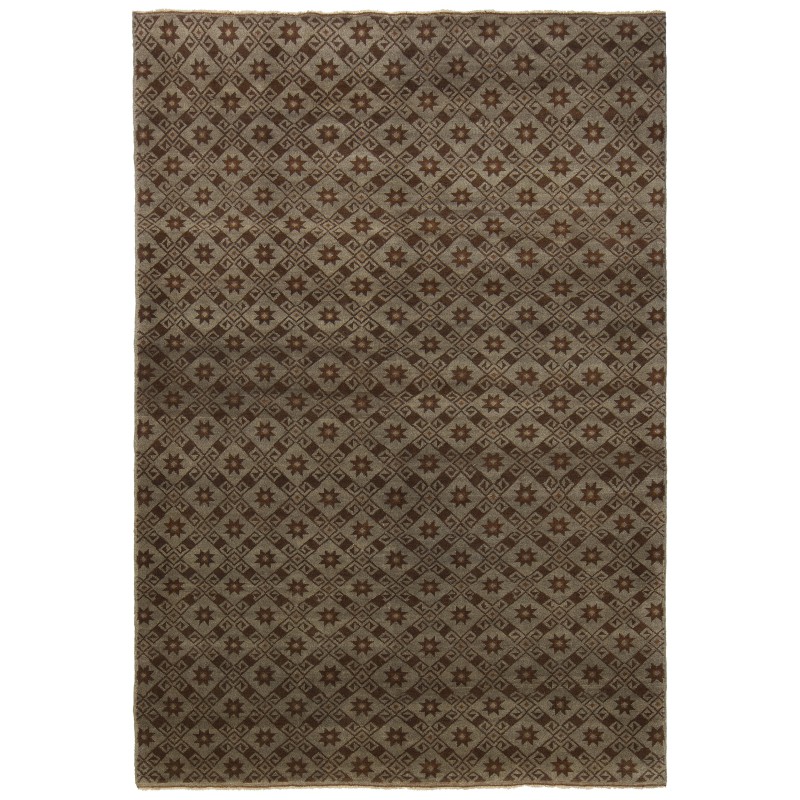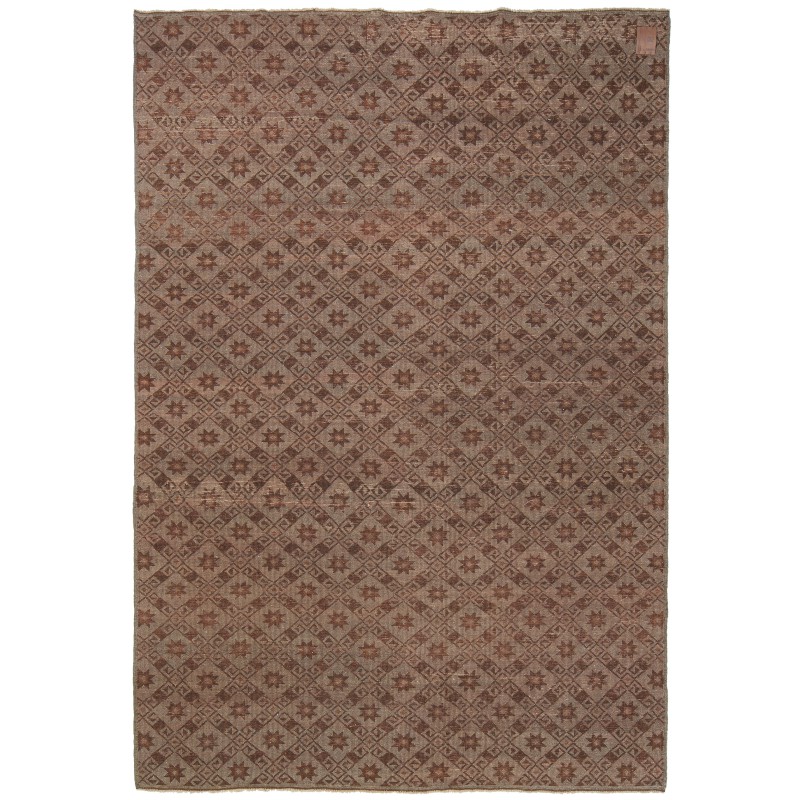



- Stock: In Stock
- Model: C50347
- サイズ: 245cm x 173cm
- SKU: ART347
絨毯の情報源は、Michael Franses著、Hali Publications Ltd、2021年図版24の書籍「オリエントスターズコレクション、アナトリアの部族絨毯1050-1750」から得られています。この13世紀の絨毯はおそらく中央アナトリアのコンヤ地域で、1200-1300年頃(C 1290-1420)に作られました。現在、コンヤの民族学博物館で展示されています。セルジューク朝時代は、アナトリアの芸術と建築の最高峰の1つを迎えており、この時代のトルコ結びの絨毯の発見は非常に興奮をもたらしました。1931年以前に、ルドルフ・マイヤー・リーフシュタール(1880-1936)によってエスレフォールモスクで発見された同時期のカーペットがさらに4つ見つかりました。エスレフォールモスクは1296年に建設が始まり、1303年ごろに完成しました。このモスクはエシュレフィッド(1280-1326)の総督の下で運営される小さな半独立のベイリク(支配地)の主要なモスクでした。これらのカーペットのうち3つは現在、コンヤの民族学博物館に展示されており、もう1つは2つの部分に分けられ、1つはハムのキアーコレクションに、もう1つはコペンハーゲンのデイビッドコレクションに所蔵されています。アラエッディンモスクの絨毯はすべてが1953年にパリで展示されましたが、エルドマンによると、コンヤとベイセヒールの絨毯は1957年までに最終的に発表されました。
この当時、コンヤとベイセヒールで発見されたトルコの絨毯ははるかに最も古いものでした。それらは強烈で壮大なデザインを持ち、色合いも鮮やかに染められています。Martinに続いて、これらの絨毯の年代付けは、これらのモスクの建設と一貫して関連付けられてきましたが、それを裏付ける証拠はありません。これらは、トライバルなノマドのトルクメン族酋長または彼の家族によって、おそらく2つのモスクへの奉納品として寄贈されたという意見があります。絨毯はそれらが寄贈された時点ですでに古かったかもしれず、最初は他のモスクに寄贈され、後にアラエッディンとエスレフォールモスクに移されたかもしれません。この絨毯は、当社のセルジューク絨毯コレクションからのデザインの一部を取り入れ、フィールドを優雅に埋めるパターンで構成されており、デザイナーによって柔らかい色合いが選ばれています。
The source of carpet comes from the book Orient Stars Collection, Anatolian Tribal Rugs 1050-1750, Michael Franses, Hali Publications Ltd, 2021 fig.24. This 13th-century carpet is from probably the Konya region, central Anatolia, circa 1200-1300 (C 1290-1420). It is exhibited at the Museum of Ethnography, Konya. The Seljuk period marks one of the highest points in art and architecture in carpets Anatolia. It is therefore not surprising that tremendous excitement was caused by the discovery of two groups of Turkish knotted-pile carpets from this era. Sometime before 1931, four more carpets from the same period were found by Rudolf Meyer Riefstahl (1880-1936) in the Esrefoglu Mosque in Beysehir, which was commissioned in 1296 and finished shortly after 1303. The latter was the principal mosque of a small semi-independent beylik under the governorship of the Eshrefids (1280-1326). Three of these carpets are now in the Museum of Ethnography in Konya; the other is divided into two parts, one in the Keir Collection, Ham, and the other in the David Collection, Copenhagen. All but one of the Ala’eddin Mosque carpets were exhibited in Paris in 1953, but it was not until 1957 that Erdmann finally published all the carpets from both Konya and Beysehir together.
The Konya and Beysehir finds were by far the oldest Turkish carpets to have been discovered at this time. They create a lasting impression: their designs are monumental and strong, and their colors are intensely dyed and brilliant. Following Martin, their dating has consistently – although probably erroneously been associated with the building of these mosques, despite the absence of any evidence to substantiate this. It is an opinion that these were pious gifts donated to the two mosques, perhaps by a tribal nomadic Turkmen chieftain or his family. The rugs could well have been old when they were given; they could have been given initially to other mosques and later moved to the Ala’eddin and the Esrefoglu, or they could have been donated after the mosques were built. This carpet has an interpreted design composed of the pattern taken from a part of our Seljuk carpets collection, filling the field elegantly and soft colors are chosen by our designers for this carpet.
全部で3色使っています。
- Rare Grey 105 (羊そのままの色)
- Burnt Coffee 102 (羊そのままの色)
- Natural Wool Color 37 (羊そのままの色)
上の番号は私たちのカラーコードです。()の中は、主な草木染めの材料です。
